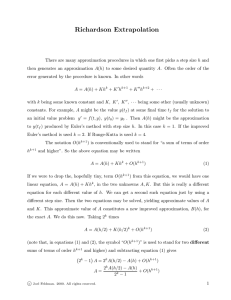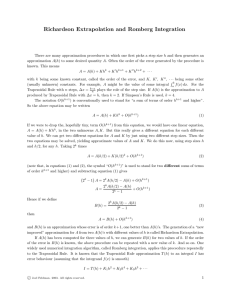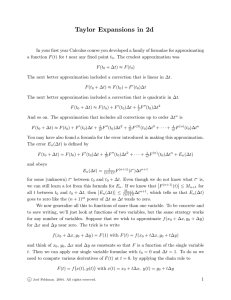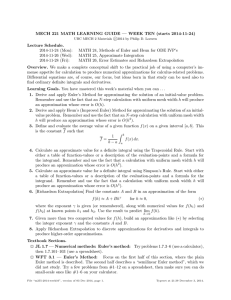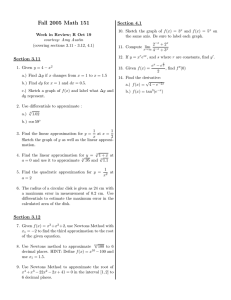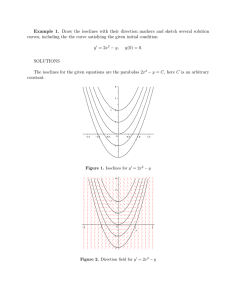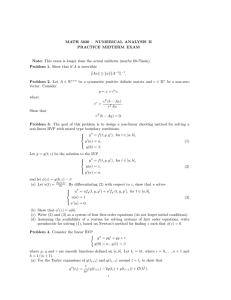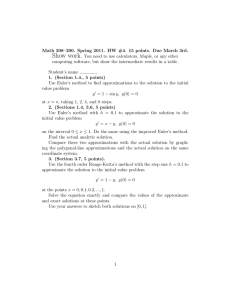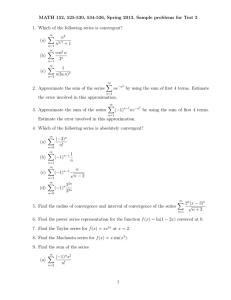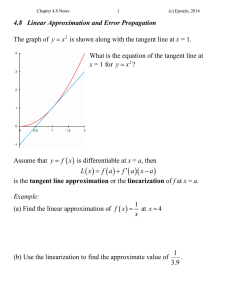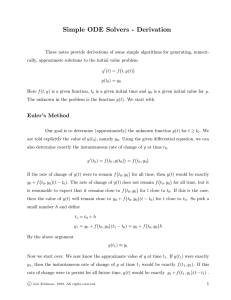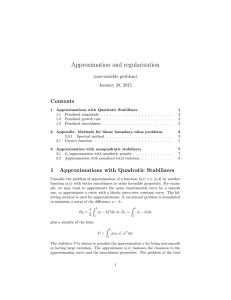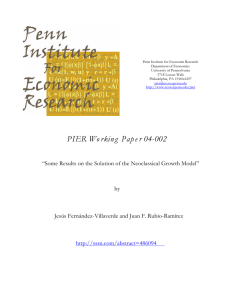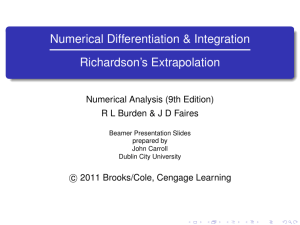Richardson Extrapolation
advertisement
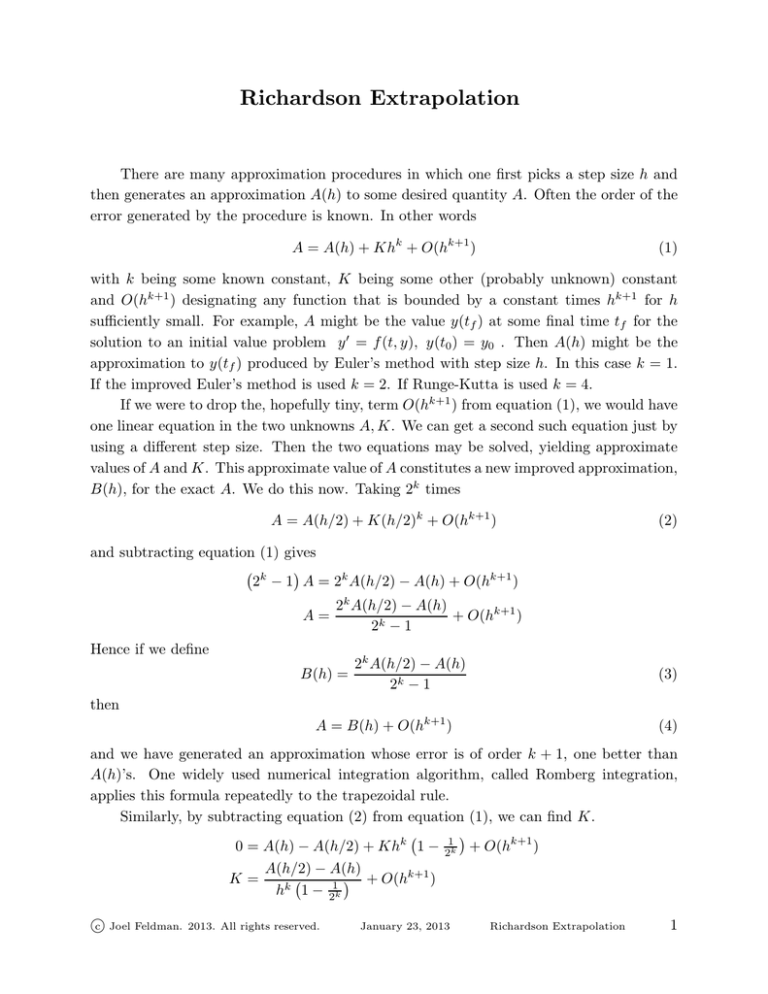
Richardson Extrapolation There are many approximation procedures in which one first picks a step size h and then generates an approximation A(h) to some desired quantity A. Often the order of the error generated by the procedure is known. In other words A = A(h) + Khk + O(hk+1 ) (1) with k being some known constant, K being some other (probably unknown) constant and O(hk+1 ) designating any function that is bounded by a constant times hk+1 for h sufficiently small. For example, A might be the value y(tf ) at some final time tf for the solution to an initial value problem y ′ = f (t, y), y(t0 ) = y0 . Then A(h) might be the approximation to y(tf ) produced by Euler’s method with step size h. In this case k = 1. If the improved Euler’s method is used k = 2. If Runge-Kutta is used k = 4. If we were to drop the, hopefully tiny, term O(hk+1 ) from equation (1), we would have one linear equation in the two unknowns A, K. We can get a second such equation just by using a different step size. Then the two equations may be solved, yielding approximate values of A and K. This approximate value of A constitutes a new improved approximation, B(h), for the exact A. We do this now. Taking 2k times A = A(h/2) + K(h/2)k + O(hk+1 ) (2) and subtracting equation (1) gives 2k − 1 A = 2k A(h/2) − A(h) + O(hk+1 ) A= 2k A(h/2) − A(h) + O(hk+1 ) 2k − 1 Hence if we define B(h) = 2k A(h/2) − A(h) 2k − 1 (3) then A = B(h) + O(hk+1 ) (4) and we have generated an approximation whose error is of order k + 1, one better than A(h)’s. One widely used numerical integration algorithm, called Romberg integration, applies this formula repeatedly to the trapezoidal rule. Similarly, by subtracting equation (2) from equation (1), we can find K. 0 = A(h) − A(h/2) + Khk 1 − 21k + O(hk+1 ) K= c Joel Feldman. A(h/2) − A(h) + O(hk+1 ) 1 k h 1 − 2k 2013. All rights reserved. January 23, 2013 Richardson Extrapolation 1 Once we know K we can estimate the error in A(h/2) by E(h/2) = A − A(h/2) = K(h/2)k + O(hk+1 ) = A(h/2) − A(h) + O(hk+1 ) 2k − 1 If this error is unacceptably large, we can use E(h) ∼ = Khk to determine a step size h that will give an acceptable error. This is the basis for a number of algorithms that incorporate automatic step size control. = B(h) − A(h/2). One cannot get a still better guess for A by Note that A(h/2)−A(h) 2k −1 combining B(h) and E(h/2). Example A = y(1) = 64.897803 where y(t) obeys y(0) = 1, y ′ = 1 − t + 4y. A(h) =approximate value for y(1) given by improved Euler with step size h. k B(h) = 2 A(h/2)−A(h) with k = 2. 2k −1 h A(h) % # .1 59.938 7.6 20 .05 63.424 2.3 40 .025 64.498 .62 80 .0125 64.794 .04 160 The “%” column gives the percentage error and evaluations of f (t, y) used. c Joel Feldman. 2013. All rights reserved. B(h) % # 64.587 .48 60 64.856 .065 120 64.8924 .0083 240 the “#” column gives the number of January 23, 2013 Richardson Extrapolation 2
